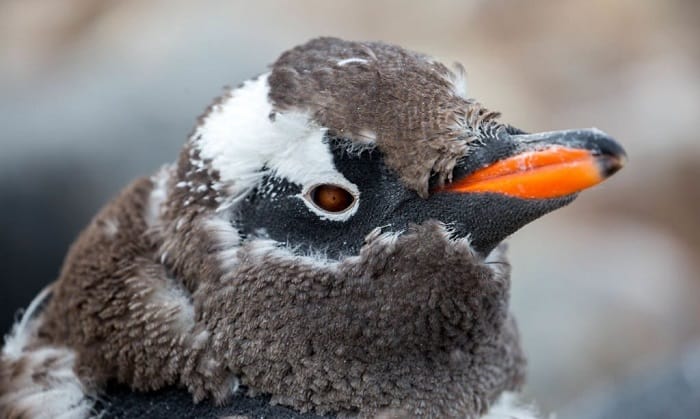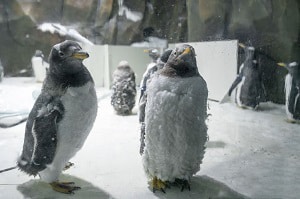Bird feathers are made of the same protein that makes up human hair and nails: keratin. But unlike hair and nails that continuously grow, feathers don’t.
However, feathers experience a lot of wear and tear, especially considering their exposure to the elements.
What is molting in birds? Molting is when a bird replaces old, worn feathers with newer ones. Aside from keeping them warm and able to fly, new feathers are also helpful for attracting mates!
Table of Contents
All About Molting in Birds
Molting is tricky. A bird losing feathers becomes more vulnerable. Additionally, the process takes time to complete: depending on the species, it can take anywhere from a few weeks to a few months!
So why do birds bother molting feathers at all?
1. Why is molting important?
Birds regrow feathers for many vital reasons. These include:
- Replacing worn-out feathers. Feathers are essential for flight and keeping a bird warm and dry, especially during winter. Not keeping their plumage in top condition can be extremely risky for a bird!
- Many male birds grow brighter, more colorful feathers to attract females. After the breeding season, they switch back to their regular colors, which are typically duller and less attention-grabbing.
- While all birds are experts at hiding, some take it a step further. The Ptarmigan is known for its ability to switch its feathers from white to brown, depending on the season.
- Sometimes, birds shed feathers because they’ve gotten itchy! Feathers can become home to parasites like feather lice, which is why birds grow back feathers.
2. Molting process in birds
Bird feathers grow out of follicles in a bird’s skin, as human hair does for us. As a feather gets worn out, it becomes loose enough to allow the emerging feather to push it out as it grows.
The process is automatic – should a bird lose a feather for any reason, even if it isn’t time for molting, the loss automatically triggers the growth of a new one in its place.
Birds can either go through a complete molt or a partial molt, depending on the need and time of year.
A complete molt means they replace all their feathers with new ones. However, note that this doesn’t mean they do it all at once!
Birds typically lose their feathers in stages, following a strategic sequence. This has led some bird lovers to refer to the process as a “complex molt” instead.
Meanwhile, partial molts mean the bird only replaces certain feathers, such as only its flight feathers or head feathers.
This is also generally done in stages, but a notable exception to this rule is ducks, geese, and swans. These birds shed all flight feathers in one go.
3. When do birds molt?
Birds generally molt in summer and spring, though this process can occur in winter as well.
Birds molt in summer to get ready for the upcoming migration season, when they don’t have to focus on nesting and tending to chicks.
Meanwhile, birds molt in winter and spring for two possible reasons. Those that stay behind need new feathers to remain warm and dry in the cold. Another is to attract mates.
There is one other stage in their life when most birds molt, though: as they mature into adulthood.
Young birds shed their “baby” feathers for “adult” feathers at some point in their development.
Songbirds most often grow their full adult feathers by the time they are a year old, but other species, such as eagles, take up to five years!
4. How often do birds molt?
Different species have different molting schedules. However, they can be categorized into four main groups:
- One complete molt per year. These species include chickadees, hawks, hummingbirds, jays, owls, swallows, and woodpeckers.
- One complete and one partial molt per year. These specially typically finish both molts before their breeding season. Some examples include goldfinches and western gulls.
- Two complete molts per year. Only species such as thorn scrubs and bobolinks that live in harsher environments need to do two complete molts per year!
- Multiple partial molts per year. Typically, species that do numerous partial molts per year do it for appearance reasons, either for mating or camouflage. The best example again is the Ptarmigan.
Frequently Asked Questions
1. Is molting painful for birds?
Molting is not painful, per se, but it is very uncomfortable. Molting reportedly makes birds feel itchy for an extended period, making them irritable.
Molting also requires a lot of energy, so if you see your bird missing feathers, it may also be lethargic and lose its appetite.
2. What do birds do when they molt?
Birds don’t need to shake or move when they molt–their feathers simply fall off.
Typically, they become much less active during this time. Songbirds may stop singing, and females don’t lay eggs while molting.
You may notice birds twitching while molting, however. This is mainly their way of dealing with the itchiness since, unfortunately, they can’t scratch themselves.
3. What causes birds to molt?
According to the molting definition, it is a regular part of a bird’s life. Molting is usually triggered by the changing season or a bird reaching adulthood.
It can also be triggered by general wear and tear–birds instantly grow back any feathers they may lose while flying, foraging, or fleeing a predator, for example.
4. How long does it take birds to molt?
On average, molting takes between 5-12 weeks. As can be expected, larger birds take longer than smaller birds due to the size and number of their feathers.
5. What are the signs of molting in birds?
How do you know if a bird is molting? Some bird molting symptoms include irritability or aggression, low energy levels and appetite, and many feathers strewn everywhere. They may also be preening a lot.
It’s very rare to visibly see your bird balding, though, since molting happens in stages. This is to ensure birds don’t experience as much stress and danger, since losing feathers may affect their ability to fly.
6. Do birds molt only feathers?
Some bird species molt other things besides feathers. Puffins regularly shed the plates over their beaks to alternate between bright and dull colors, depending on the season!
7. What does my pet bird need while it’s molting?
If you are looking to help a molting bird, here are a few things you can do:
- Mist your bird twice a day to help it feel more comfortable, or give it warm baths.
- Feed it a high-protein diet, so it can grow strong, healthy feathers.
- Give it toys to distract it from the itch.
- Keep your bird away from chilly drafts. While they don’t necessarily need to be kept hot, they are more sensitive to cold while molting.
Conclusion
What is molting in birds? Molting is a bird’s equivalent of updating its wardrobe.
Sometimes, it changes feathers to keep up with seasonal demands like breeding and migration, and sometimes, it changes feathers since its old ones are worn out.
Though the process is a little uncomfortable for birds, you never need to worry–they are not being harmed in the slightest. Molting, after all, is simply part of being a bird and the cost of being able to take to the skies!

George and I became friends after a birdwatching trip with our new group. And we have been enjoying every adventure together. When he told me the idea of establishing a site that shares our experiences and fun, I immediately agreed. After trials and errors, here we have Thayerbirding.


















